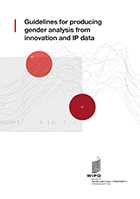Innovation Gender Gap: In Canada, 1 in 8 AI Inventors is a Woman
The Canadian Intellectual Property Office (CIPO) conducted a study to measure how their female inventors were faring in the field of artificial intelligence (AI), and compared it to the global average. The report found that the Canadian share of female inventors in AI patenting lagged behind the rest of the world.

During WIPO’s IP Gender Gap Seminar Series (America’s region) held on October 14, 2021, Sean Martineau, the Acting Director of Business Improvement Services at the CIPO, shared main findings of the CIPO report on gender imbalance in AI, and introduced two new indicators they developed to track progress in the field.

The report linked more than 85,000 worldwide patented inventions (published between 1998 and 2017) to WIPO’s World Gender Name Dictionary to identify the gender of inventors. The report found that Canada lagged behind the world average – only one out of eight Canadian AI inventor is a woman in comparison to the world’s one out of four.

To help track of potential improvement to the participation of women in patenting, two new indicators were developed to compare the gender imbalance trend with the world:
1. The Gender Classification Index (GCI)
The GCI rescales the number of inventors of each gender to 100 in the first year and recalculates the number of inventors in subsequent years against this base. This offers easy-to-read values of the evolution of each gender. Go to minute 06:20 of the video above.
2. The Relative Participation of Women (RPW)
The RPW provides an indication of a country’s prominence of women in patenting relative to its proportion of patents in the sector of interest. A negative RPW value indicates that the country is performing below the world average, while a positive value suggests a better-than-average participation of women in patenting. Go to minute 09:30 of the video above.
Do you want to learn more about Canada’s science, technology and innovation experience? Check our selection of innovation and IP-related studies on the country.
Other stories you may enjoy

Innovation Gender Gap: The Challenges of Measuring Gender Inequality in Innovation
Identifying where gender gap challenges in innovation are may be the key to help policymakers intervene effectively. Listen to the gender and diversity expert, Lisa Cook, discussing the issue.

Innovation Gender Gap: 4 Indicators to Measure Gender Gap in Innovation
There are several measures of gender gaps in innovation. However, choosing the “right” indicator depends on the purpose. Here are some suggestions on what to consider when choosing the type of indicator.
Related resources

Guidelines for producing gender analysis from innovation and IP data
Understanding how women and men can access and use the intellectual property (IP) system equally is key to ensuring that their ingenuity and creativity translates into economic, social and cultural development. This short guide summarizes best practice for producing innovation and IP gender indicators.